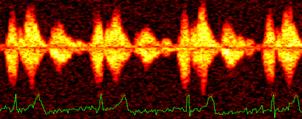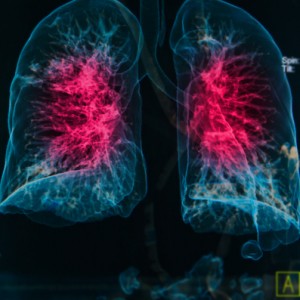CTEPH Patients Are Better Assessed During and After Exercise

Courtesy of EchoSense
 According to a recent study published in the journal Heart, RV afterload increases in patients with chronic thromboembolic pulmonary hypertension (CTEPH) during exercise, resulting in a marked reduction in RVEF and SV reserve. However, sildenafil may reverse this effect.
According to a recent study published in the journal Heart, RV afterload increases in patients with chronic thromboembolic pulmonary hypertension (CTEPH) during exercise, resulting in a marked reduction in RVEF and SV reserve. However, sildenafil may reverse this effect.
In patients with pulmonary hypertension, RV function is the most relevant predictor of outcome, with studies with cardiac magnetic resonance (CMR) imaging showing the predictive value of stroke volume index (SVi), RVEF and indexed RV end-diastolic and end-systolic volumes (EDVi and ESVi, respectively). Patients are usually examined while they are resting, but patients with PH typically develop symptoms during physical exertion. As a result, evaluation of RV performance during exercise better explains why some patients with PH have impaired exercise capacity. Still, studies with patients with chronic thromboembolic pulmonary hypertension are lacking.
To address this clinical unmet issue, in the study titled “Exercise pathophysiology and sildenafil effects in chronic thromboembolic pulmonary hypertension,” Dr. Guido Claessen, Department of Cardiovascular Medicine, University Hospitals Leuven and colleagues, assessed RV performance during continuous exercise and free breathing in patients with chronic thromboembolic pulmonary hypertension (CTEPH).
A total of 14 patients with CTEPH and 7 healthy control subjects were subject to cardiopulmonary evaluation to determine peak exercise oxygen consumption (VO2peak) and ventilatory equivalent for carbon dioxide (VE/VCO2). All participants were then tested with cardiac MRI, which was performed while at rest and during supine bicycle exercise while the researchers were measuring mean pulmonary arterial pressure (mPAP) before and after administering sildenafil.
Data analysis revealed that during supine bicycle exercise, compared to healthy controls, patients with CTEPH had a greater increase in the ratio of mPAP relative to cardiac output (CO). The results also showed that stroke volume index (SVi) and RVEF increased during exercise in the healthy controls, but not in CTEPH patients. Sildenafil decreased the mPAP/CO slope and increased SVi and RVEF in CTEPH patients, however, this was not observed in the healthy controls. In CTEPH patients, the results showed a correlation between RVEF reserve with VO2peak and VE/VCO2. Resting RVEF was not correlated with VO2peak and VE/VCO2.
Based on these results, the researchers concluded in their study that, “exercise measures of RV function explain much of the variance in the exercise capacity of patients with CTEPH while resting measures do not. During exercise, RV afterload increases disproportionately in patients with CTEPH resulting in a marked reduction in RVEF and SV reserve. This effect can be partially reversed with sildenafil.”







